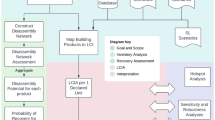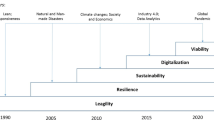Abstract
In construction, frequent contract changes and budget overages occur due to uncertain construction site conditions, schedule delays, and cost fluctuation. However, it has been demonstrated that it is possible to reduce construction costs through creative alternative solutions. For instance, through the implementation of the “Enforcement Decree of the Budget and Accounts Act” in 1980, the Korean government has attempted to enhance the construction process by distributing saved costs to contractors. However, Korea’s “Technology Development Rewarding System,” which is a regulation to activate Value Engineering (VE), has yielded tenuous results with only 5 successful cases. Through an examination of previous research and expert surveys on VE, this study identifies the predominant factors that influence the implementation of a Value Engineering Change Proposal (VECP) system. These variables are then divided into 5 categories: (1) design quality; (2) type of ordering system; (3) contract change; (4) attractiveness of VECP to contractors; and (5) attractiveness of VECP to owners. Furthermore, while previously proposed strategies, such as controlling the sharing rate, have been based on fragmentary analysis, this study deploys a System Dynamics (SD) approach to comprehensively analyze these variables and their causal relationships, and subsequently present 5 strategies to diffuse VECPs in the public sector. Finally, through a case study, this research proposes the practical implementation of the SD methodology for the development of government and company VE policy. Ultimately, this research aims at presenting strategies that will induce the government to revise their VE policy.
Similar content being viewed by others
References
Ahmad, S. and Simonovic, S. (2000). “System dynamics modeling of reservoir operations for flood management.” Journal of Computing in Civil Engineering-ASCE, Vol. 14, No. 3, pp. 190–198.
Choi, S. I. and Kim, S. B. (2005). “Proposals for continuous improvement of domestic construction VE effect.” Korean Journal of Construction Engineering and Management, KICEM, Vol. 6, No. 2, pp. 28–31.
Hyun, C. T. (1998). “Improvement of VE activities in the Korean construction industry using partnering and constructability concepts.” Journal of the Architectural Institute of Korea(Structure & Construction), AIK, Vol. 14, No. 6, pp. 163–173.
Hyun, C. T. (2000). “Value engineering in the domestic construction industry.” Korean Journal of Construction Engineering and Management, KICEM, Vol. 1, No. 3, pp. 9–12.
Jang, H. S., Choi, S. I., and Hyun, J. S. (2005). A case study of top global design & engineering firms’ business strategy innovations for global design market, Construction & Economy Research Institute of Korea, Korea.
Kang, G. Y., Choi, M. I., Ryu, S. H., Kim, Y. T., and Hyun, C. T. (2001). “A study on the development of the joint value engineering using the partnering and the constructability concepts.” Proceeding of Annual Conference of the AIK, AIK, Seoul, Korea, Vol. 21, No. 2, pp. 627–630.
Kim, D. H. (1999). System dynamics, Daeyoung Co., Seoul, Korea.
Kim, H. I. (1998). Causes and countermeasure of contract change in public sector, Institute of Assemblyman Kim Hong Il, Seoul, Korea.
Kim, S. B and Choi, J. W. (2004). “Assessment of design phase VE process and its impacts.” Journal of the Korean Society of Civil Engineering, KSCE, Vol. 24, No. 5D, pp. 749–757.
Kim, C. W., Jung, Y. I., Kim, Y. T., and Hyun, C. T. (2002). “A Study on the estimating strategy for the design phase VE consulting fee.” Korean Journal of Construction Engineering and Management, KICEM, Vol. 3, No. 1, pp. 97–106.
Kim, H. G., Um, I. J., Koo, K. J., and Hyun, C. T. (2006). “Application of Partnering to Design VE to Public design-build projects.” Korean Journal of Construction Engineering and Management, KICEM, Vol. 7, No. 1, pp. 110–118.
Korea Research Institute For Human Settlement (2005). A study on the core construction engineering technology development for improvement of international competitive power, MLTM of Korean government.
Lee, J. S. (2006). “Impacts of pre-construction design quality on construction durations and costs.” Journal of the Architectural Institute of Korea(Structure & Construction), AIK, Vol. 22, No. 5, pp. 219–226.
Lee, S. H. (2005). Analysis on Korean construction industry, Bosunggak, Seoul, Korea.
Lee, S. W. (2006). “The impact of magnifying the lowest price bidding system.” Korean Journal of Construction Engineering and Management, KICEM, Vol. 7, No. 1, pp. 16–18.
Lee, J. U., Choi, S. I., and Park, C. S. (2003). “An improvement in the value engineering incentive program of the Korean Construction Industry.” Journal of the Architectural Institute of Korea(Structure & Construction), AIK, Vol. 19, No. 5, pp. 177–185.
Lee, S. H., Koo, K. J., and Hyun, C. T. (2005). “Application of value engineering to early design phase in construction projects.” Korean Journal of Construction Engineering and Management, KICEM, Vol. 6, No. 3, pp. 156–166.
Lee, S. H. and Lee, S. W. (2006). A basic study on introduction of best value in the procurement, Construction & Economy Research Institute of Korea, Seoul, Korea.
Lee, D. H., Park, H. S., and Lee, K. S. (2006). “Industry’s perception of construction technology policy for public sector projects” Korean Journal of Construction Engineering and Management, KICEM, Vol. 7, No. 3, pp. 122–129.
Lim, B. H. (1997). Theory and practice of VE method in construction industry, Publishing Company-Construction Culture, Seoul, Korea.
Omigbodun, A. (2001). “Value engineering and optimal building projects.” Journal of Architectural Engineering., Vol. 7,Issue 2, pp. 40–43.
Park, C. S. (2003). “Proposals for application of VE methodology in Korea construction industry.” Technology and Trends in Construction Engineering and Management, KICEM.
Park, M. S. (2005). “Model-based dynamic resource management for construction projects.” Automation in Construction, Elsevier, Vol. 14,Issue 5, pp. 585–598.
Park, C. S., Choi, S. I., and Lee, J. U. (2002). “Comprehensive appraisal of value engineering practices in domestic construction industry.” Korean Journal of Construction Engineering and Management, KICEM, Vol. 3, No. 2, pp. 67–74.
Park, C. S., Choi, S. I., Lee, Y. H., Lee, J. S., and Lee, J. U. (2003). Construction value engineering study for improving productivity, Construction & Economy Research Institute of Korea, Seoul, Korea.
Park, M. S., Lee, M. H., Kim, S. T., and Lee, H. S. (2006). “Boost, control, or both of housing market; key issues in 831 housing policies.” Journal of the Architectural Institute of Korea(Structure & Construction), AIK, Vol. 22, No. 8, pp. 159–169.
Park, H. and Song, J. Y. (2000). A study on VE methodology and measures to activate regulation, Korea Development Institute(KDI), Seoul, Korea.
Sadi, A. (2000). “Computerized system for application of value engineering.” Journal of computing in civil Engineering, ASCE, Vol. 14, No. 3, pp. 206–214.
Son, M. S. (2003). “The present condition and case of VE of Dong-a Construction company that supports management.” Technology and Trends in Construction Engineering and Management, KICEM, Seoul, Korea.
Sternman, J. (2000). Business dynamics: System thinking and modeling for a complex world, Mcgraw-Hill. New York, NY.
Um, I. J., Jung, Y. I., Kim, C. W., and Hyun, C. T. (2001) “A study of the improvement for design VE job plan through the benchmarking.” Proceeding of Annual Conference of the KICEM, KICEM, Seoul, Korea, pp. 88–95.
Author information
Authors and Affiliations
Corresponding author
Rights and permissions
About this article
Cite this article
Park, M., Ahn, C., Lee, H. et al. System dynamics-based strategies to diffuse construction VE in the public sector. KSCE J Civ Eng 16, 486–498 (2012). https://doi.org/10.1007/s12205-012-1226-0
Received:
Revised:
Accepted:
Published:
Issue Date:
DOI: https://doi.org/10.1007/s12205-012-1226-0




